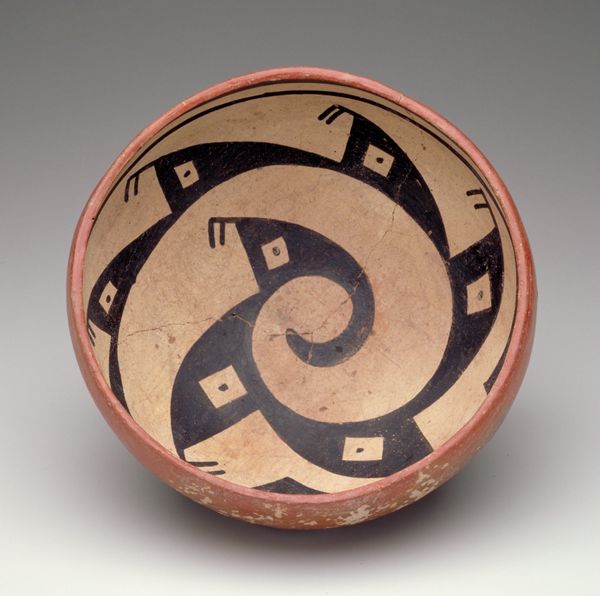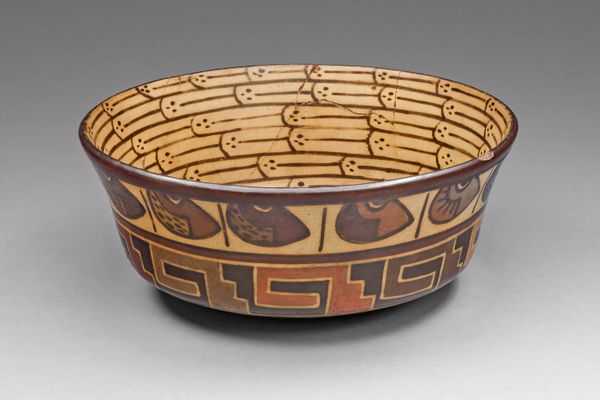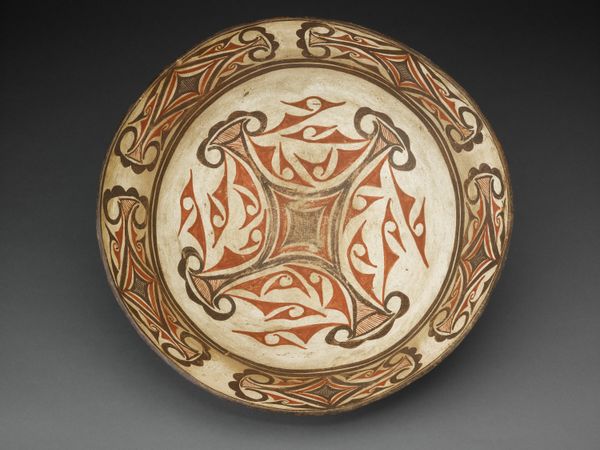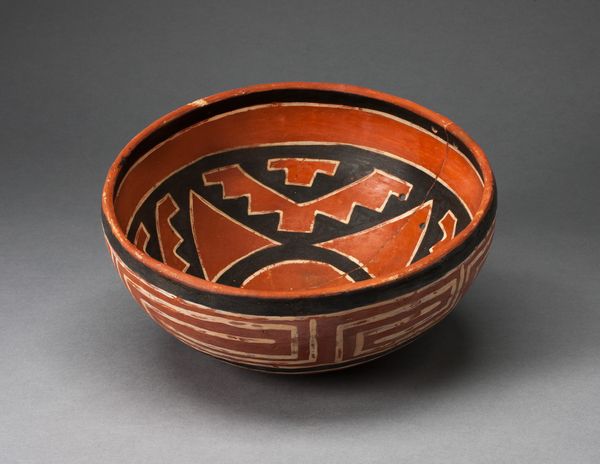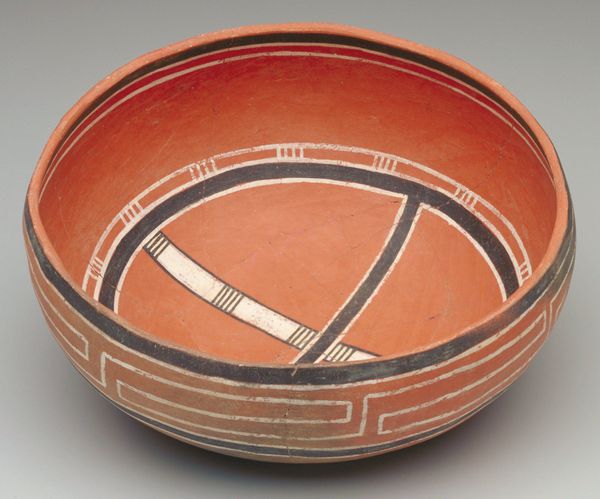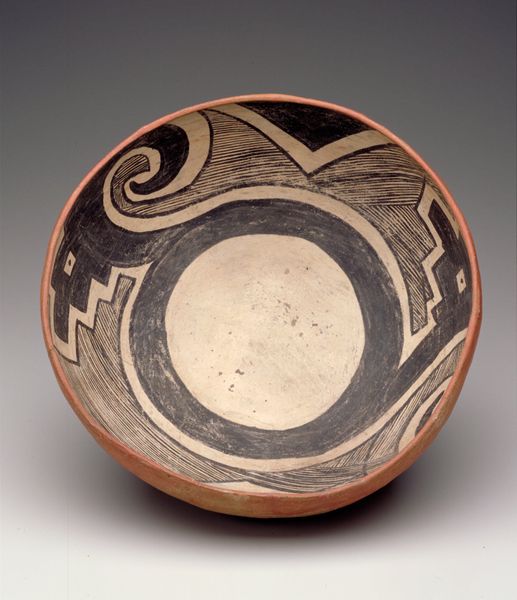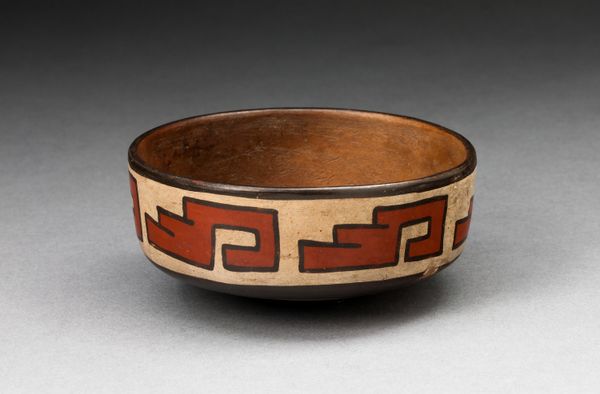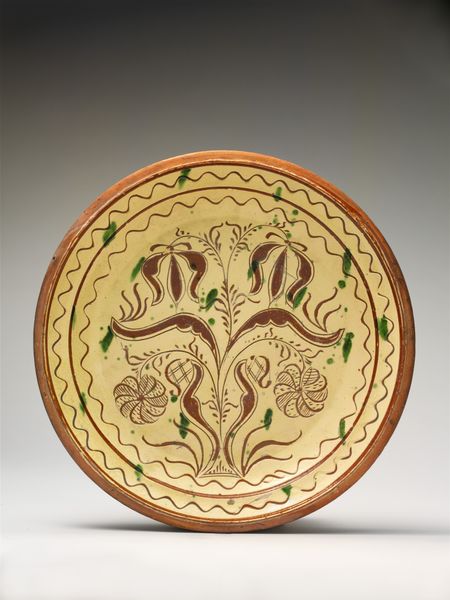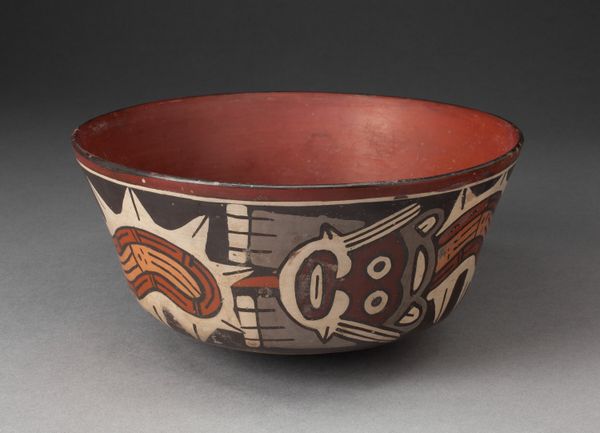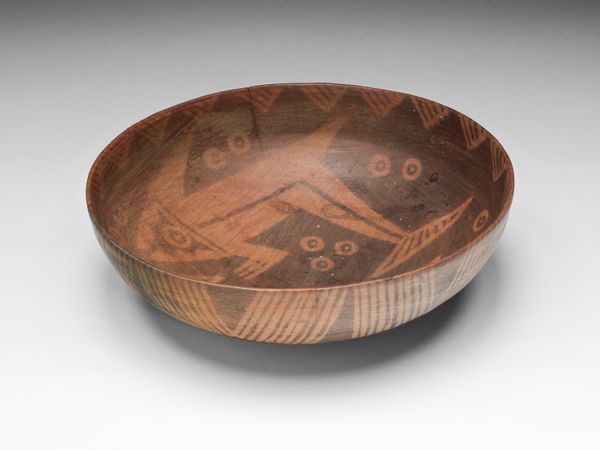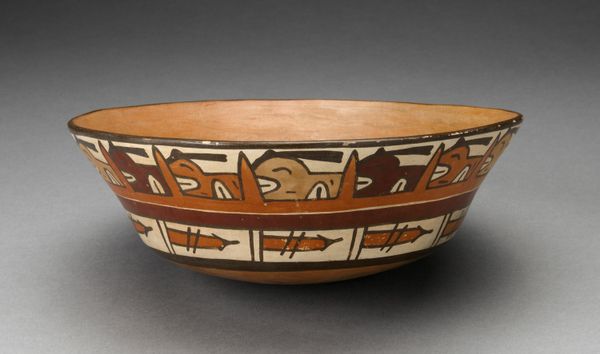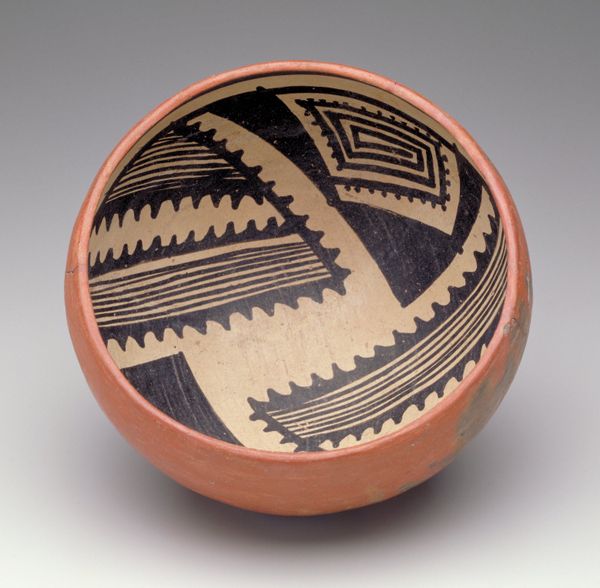
ceramic, earthenware
#
pottery
#
ceramic
#
round design
#
earthenware
#
geometric
#
indigenous-americas
Dimensions: 3 3/4 x 11 1/2 in. (9.53 x 29.21 cm)
Copyright: Public Domain
Editor: So, this is "Vessel" made by a Hopi artist, probably in the early 20th century. It's a ceramic bowl, and the geometric designs are quite striking. I’m really drawn to the stylized patterns... They give it a sense of movement. What do you see in this piece? Curator: Well, as an iconographer, I am immediately drawn to the symbols. This is more than just a beautiful bowl. The patterns carry a deep well of cultural memory. The spirals, for example, can often symbolize journeys or the cyclical nature of life – a common motif in many indigenous cultures. The question becomes: what specific meanings did these forms hold within the Hopi tradition? Editor: Journeys… that's interesting, because the spiral makes me think about water. Does the material – the clay itself – have any significance? Curator: Absolutely! The Earth from which the clay comes is itself sacred, alive. And the process of transforming earth into a vessel mimics creation. It's not merely decorative, is it? It's deeply entwined with Hopi cosmology and their relationship to the natural world. Even the colours are important – can you see how they speak to the earth, sun and sky? Editor: So, each choice, from the material to the design, carries layers of meaning? Curator: Precisely! And understanding these layers is key to appreciating the depth and artistry of the piece. Think about how the Hopi people have maintained this visual language across generations. This "Vessel" acts as a repository of cultural knowledge. Editor: It's incredible to think about all the history held within a single object. I see the patterns so differently now! Curator: Indeed, we’ve barely scratched the surface. But perhaps now, others will see more than just a beautiful bowl!
Comments
minneapolisinstituteofart almost 2 years ago
⋮
The Hopituh Shinumu (Hopi) have a long tradition of making pottery. The quality and creativity of pottery design had reached a peak in the ancient town of Sikyatki between the 14th and 17th century. By the time the former Indian Agent and Englishman, Thomas Keam set up a trading post in Hopituh Shinumu territory in 1875, pottery had declined and many were making white-slipped vessels with A'shiwi (Zuni)-inspired decoration. With Keam's encouragement, the revival of the Sikyatki style began and was led by Nampeyo, a potter from the First Mesa town of Hano. Common elements of the Sikyatki Revival Style include abstracted birds and feathers, bold curvilinear lines, and a characteristically low vessel shape.
Join the conversation
Join millions of artists and users on Artera today and experience the ultimate creative platform.
